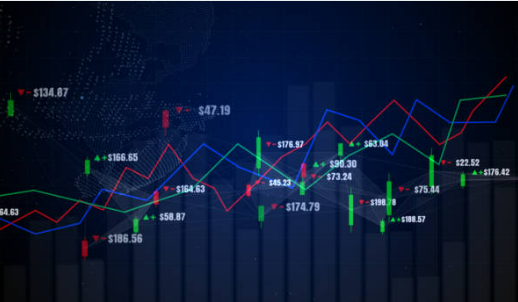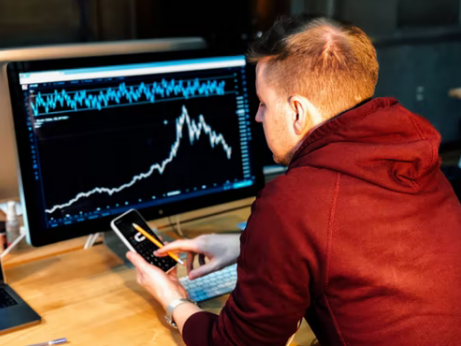
Drake Hampton
Apr 20, 2022 16:51

In the 1980s, Richard Dennis, a well-known trader who had established his reputation and wealth trading various markets, made a wager. He bet his friend, William Eckhardt, that anyone could be taught to trade and 'raised' in how he had witnessed newborn turtles being reared in Asia.
As the pupils were dubbed, these' turtles were given Dennis's own money and taught several principles about a complete trading system, including market selection, position-sizing, entrances, stops, exits, and strategies. The goal was to establish a purely mechanical technique that, while not consistently successful, would provide a set of rules that eliminated emotion and judgment, leaving traders with only the rules. Dennis contended that he could post his rules in a national newspaper, and only very few individuals would utilize them because the majority of traders do not adhere to rules rigidly, preferring to improvise when the mood strikes, therefore departing from the rules and negatively impacting performance.
During his meeting with fellow trader William Eckhardt, Dennis said that traders could be grown as readily as turtles on a farm he observed in Singapore. (That is how the term "turtle trading" originated.) Eckhardt disagreed, believing that traders such as Dennis possessed a natural ability. Due to their dispute, they agreed to wager and see if Dennis could teach random individuals to trade as well as he could.
Turtle trading began in 1983. (Cue the soundtrack from Trading Places.) Richard Dennis, a commodity trader, felt that anyone could be taught to trade and become an experienced trader like him during the 1980s boom period of trading. By the age of 26, Richard had established himself as a legendary trader. He amassed a net worth of over $100 million during his tenure at the Chicago Mercantile Exchange.
Dennis notes in his book Market Wizards, "I always remark that you could print my trading rules in a newspaper, and nobody would follow them." Consistency and discipline are critical, and almost anyone can concoct a set of rules that is 80 percent as effective as what we taught our people. What they could not do was instill in them the courage to adhere to those standards even when circumstances deteriorated."
While Dennis is credited with popularizing turtle trading, Richard Donchian is credited with inventing trend trading. In the 1960s, Donchian established the strategy with the following weekly trading rule:
"When the price exceeds the high of the preceding two calendar weeks (the optimal number of weeks varies per commodity), close your short positions and purchase. When the price falls below the two-week low, liquidate your long position and trade short."
Donchian developed a risk-averse trend trading strategy, but Dennis polished the turtle trading system.
Dennis began the turtle trading experiment by placing an advertisement in The Wall Street Journal, where he discovered 13 "turtles" among the thousands who applied. He put them to the test by asking them a series of true-or-false questions.
Below are five of them:
Other people's perspectives on the markets are instructive to follow.
Trades in large amounts of money are made when one can get long at the lows following a significant decline.
Investors should be aware of where to liquidate their holdings in the event of a loss.
An investor does not need to monitor every quote when trading in the markets.
If a trader has $10,000 to stake, he or she should place a minimum of $2,500 on each trade.
Dennis selected investors to be turtle traders based on their selection of 2,4,5, 1, and 3.
Dennis took up a broad advertisement in the Wall Street Journal. The advertisement read as follows:
C&D Commodities' Richard J. Dennis is taking applications for the post of Commodity Futures Trader in order to grow his existing group of traders. Mr. Dennis and his staff will educate a select selection of applicants about their proprietary trading concepts. Successful candidates will subsequently be restricted to trading futures exclusively for Mr. Dennis; they will not be permitted to trade futures for themselves or anyone. Traders will be compensated as a proportion of their trading gains and permitted to take a small profit. Prior trading experience will be considered but is not required. Applicants should email a brief resume to C&D Commodities 141 W. Jackson, Suite 2313, Chicago, IL 60604. Dale Dellutri Applications must be postmarked no later than October 1, 1984. There will be no telephone calls accepted.
Markets traded: The turtles traded futures contracts, aiming for highly liquid markets that would allow them to trade without causing a market move. The turtles traded commodities, foreign exchange, metals, energy, bonds, and the S&P 500 index.
Position sizing: the turtles traded using a position-sizing algorithm that adjusted the amount of the trade-dependent on the market's dollar volatility. This technique aimed to increase diversification by guaranteeing that each position in each market was the same size. Markets with greater liquidity would see fewer contracts exchanged, whereas markets with less liquidity would trade more contracts. The methodology examined the true range's 20-day exponential moving average (on the IG platform, a similar method can be achieved using the Average True Range indicator, which shows how volatile a market is).
Two different entrance systems were employed. The first is a short 20-day breakout, defined as a high or low from the previous 20 days or a 55-day breakout, and winning positions would be supplemented by up to four more entries. The turtles were instructed to take all available signals, as missing a signal could miss out on a large winner, lowering overall returns.
Stop losses: the turtles were trained always to employ stop losses to prevent losses from becoming too large. Crucially, they established their stop loss prior to entering the position, so they quantified their risk prior to initiating the trade. As a result, they avoided suffering catastrophic losses in the manner of renowned trader Nick Leeson, who allowed his losses to spiral out of hand. Wider stops were used in more volatile markets to avoid getting 'whipsawed' out of a deal.
Exits: exiting a position prematurely might significantly reduce the potential profit on that trade. This is a frequent error made by trend-following systems. The trading strategies that the turtles discovered required them to make numerous trades, just a few of which resulted in large profits. Numerous others were minor setbacks. Exit criteria for system one were a 10-day low for long positions and a 20-day high for short positions, whereas for system two, a 20-day high or low was used. They did not employ stop-loss orders but instead monitored the price in real-time.
Finally, the turtles were given some specifics about utilizing limited orders and dealing with fast-moving markets, such as how to wait for quiet before placing orders, rather than rushing in and attempting to grab the 'best' price, as many rookie traders do. Additionally, they were instructed to purchase the most robust markets and sell the weakest to capitalize on the momentum.
Sure pupils demonstrated an inability to obey the guidelines, with one in particular sure Dennis hid information. In reality, this student's poor performance resulted from a failure to obey the rules.
The technique is designed to profit from trending markets, which means that a trader may experience prolonged drawdowns in range-bound markets that move sideways for an extended period. The turtles' capacity to follow the rules even during these moments of underperformance was put to the test. It is hard to predict whether a 20-day high or low test will result in a breakout, as no trader possesses a crystal ball. Traders must be prepared to lose, and one effective method of mental preparation is to think that each trade is a loser, which results in a pleasant surprise when a winner occurs.
The turtle experiment teaches us valuable lessons about being a good trader. One critical lesson is the importance of having a system; without a well-defined set of parameters for entry, exit, position-sizing, and stop losses, a trader relies on his gut instinct. At some point, this will take him down the path of excessive trading and position sizing.
The second lesson is a psychological one. While Dennis did not include a psychological component, some students had difficulty adhering to the rules. Their desire to tinker with the rules or overlook specific entries demonstrates that humans have the most significant difficulty adhering to a set of rules, even when the system has proven highly effective.
Dennis' turtles were taught the principles of commerce. He instilled in them the conviction that earning a consistent profit did not involve them being more bright or fortunate — all they needed to do was obey the rules. Thus, what were the provisions of these regulations?
Although the exact rules are detailed in Michael Covey's Complete Turtle Trader: How 23 Novice Investors Became Overnight Millionaires, Business Insider summarized the Turtle Traders' application of them.
Dennis's trend-following trading strategy was built on breakouts of price channels. The technique utilized two different systems dubbed S1 and S2. These technologies were utilized for trading liquid futures contracts, and the following is the plan for each.
This was the more aggressive and short-term trading strategy of the two. For a long position, an entry was made (you would purchase) when the current price exceeded the prior twenty-day high price. If you hope to take a short position, the opposite was true: an entry (a short position) was formed when the current price was lower than the preceding twenty days. However, this signal would have been ignored had the previous signal breakout resulted in a profitable transaction. In this system, the signal to exit was a ten-day low (for long positions) or a ten-day high (for short positions) (for short positions).
This system utilized a little more time-consuming approach (though by no means a long-term strategy). Additionally, it posed a little lower risk than S1. The indication to enter using this strategy was when the current price exceeded the previous 55-day high, and the entry signal came when the price fell below the 55-day low for a short position. In contrast to S1, the signal to enter the market was valid regardless of whether the initial breakout was profitable. For S2, the signal to leave was when the price reached a 20-day low (for long holdings) or high (for short positions) (for short positions).
Both of these strategies were designed to assist turtles in determining when to enter and depart the market. The turtles were following a trend, but trends are frequently tricky to spot when they occur, and they become visible only in retrospect. As a result, the entrance signal alerted the turtles to a possible trend.
Once a trend is identified, determining when to abandon the approach becomes more complex, and greed and fear frequently result in disastrous exits. Both S1 and S2's exit strategies tried to neutralize the impact of these two emotions. If a turtle made a trade and profits continued to grow, the turtle might be tempted to stay in the position and earn even more money, but if the turtle's system indicated that it was time to exit, the turtle had to exit. On the other hand, if the turtle can quit the strategy and profit, the turtle may fear remaining too long and forfeiting the profit, but if the exit strategy does not tell the turtle to exit, the turtle is forced to stay in the trade.
Choosing when to enter and exit the marketplace is one of the most challenging aspects of trading. These two techniques formed the foundation of what Dennis taught his turtles. However, traders must also consider extra elements, so Dennis taught his turtles some additional principles that allowed them to filter their trades further. These are several rules pertaining to the size of positions and pauses.
Day traders may need to slow down their fast-paced trading schedules to a turtle's pace. While the slower pace may have worked for the original turtle's more primitive trading mechanism, it may not work for increasingly aggressive dealers. After monitoring the markets all day, busy traders respond more swiftly. On the other hand, Turtle traders can monitor patterns for weeks, months, or even years.
While turtle trading was successful in the 1980s, there is disagreement over whether the turtle trading strategy would work now. Dennis himself stated that the turtle trading strategy can still operate in this era of Wall Street volatility. According to an interview in 2018, prior to the current unpredictability, he highlighted that it may be more difficult to implement now due to the market's lower volatility two years ago.
"Well, I wish you the best of luck with that one. The markets have seen significant changes. What works is changing, which is a concern, but what is more concerning is the absence of volatility. Volatility appears to have tapered off intermittently throughout the years. You know, we would rather reintroduce volatility. That is a variable that you cannot control, but we believe it is more critical than tweaking the system, although system adjustment is also necessary," Dennis stated.
The market's state is simply the current status of equities. If Apple(NYSE: AAPL) is currently trading at $140, this is the market's present situation.
Risk management was critical, and Dennis ensured that his turtles kept an eye on the stock market each day. If the price of Apple's stock varied between $130 and $140, the turtles stated that they had 1 N or unit of volatility. Thus, Apple's volatility would be 10 N in this situation.
What type of equity is traded? Turtle dealers must be aware of the precise quantity of money being exchanged. If they knew exactly how much money they had, they could calculate the risk associated with each trade.
Along with having the precise amount of money accessible to turtle traders, they needed a precise plan for purchasing and selling stocks. This strategy prohibits traders from acting solely on emotion when buying or selling equities. If Apple's stock is plummeting, a turtle trader who follows turtle trader guidelines will not panic sell.
Turtle trading was all about risk management. If a turtle trader has $1,000 to invest, he or she should invest only 1% or 2% in Apple shares. Turtle traders were able to reduce their losses due to the low risk.
The results of the Turtle Trading experiment can be interpreted in various ways. We could look at the turtles' success and conclude that anyone can learn to trade. We can see Dennis's significant losses and how they serve as a warning tale regarding extremely erratic trading tactics. We may utilize the experiment to demonstrate the contrasts between the 1980s and contemporary marketplaces.
We find the Turtle Trading experiment fascinating in terms of examining the influence of emotions on trading decisions. Even with a clear set of instructions from someone regarded as an expert in his profession, many turtles were unable to obey them, to the point where they were asked to quit the experiment. In trading, human nature and our best interests frequently collide. While it is unknown whether the Turtle Trading method would work in today's markets, it is evident that regardless of the trading system you employ. You must have a rational, well-thought-out foundation for each trading choice you make and adhere to the system.

Apr 19, 2022 17:58

Apr 20, 2022 17:00